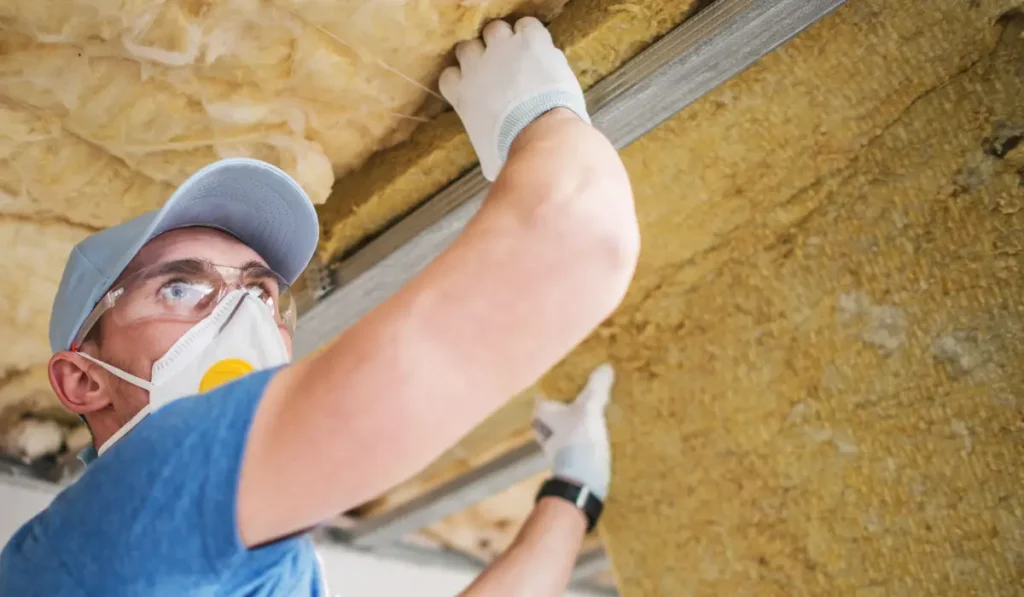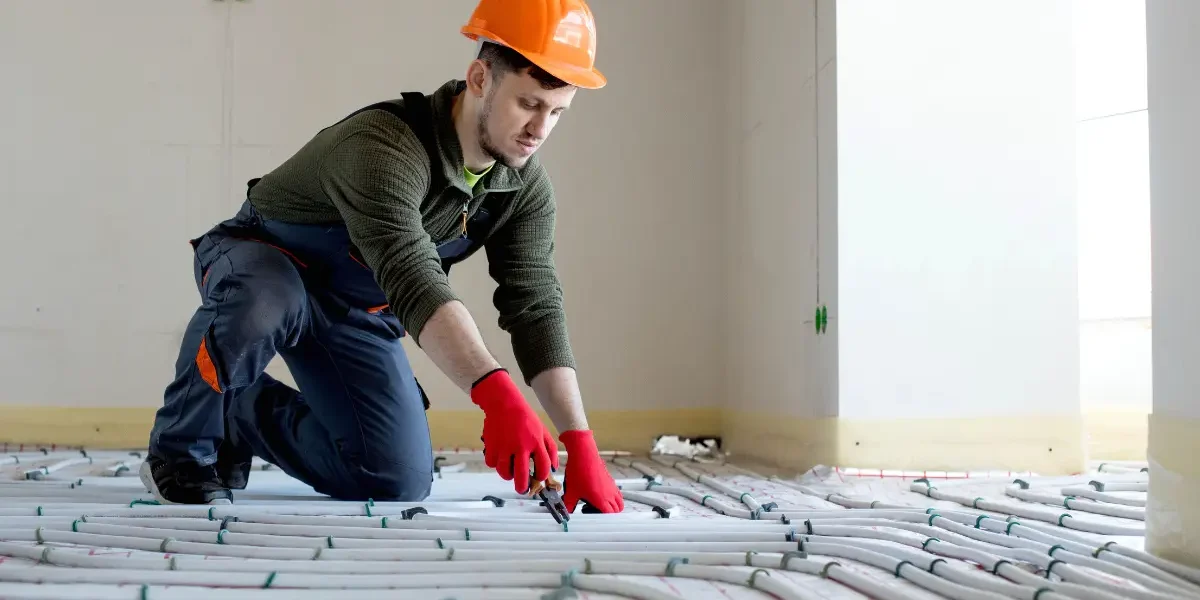When building a custom home in Kingston, you can design for Ontario’s long, sub-zero winters from the start. The right features not only keep your family warm but also make your home more efficient, durable, and easy to maintain year after year.
As home builders that specialise in cold-climate construction any recommendations we make help you improve energy performance, reduce wear on systems, and make everyday life easier during the season’s toughest weeks.
Here are 10 genius winter features every custom home should have in Ontario:
1. Radiant Heated Floors
Installed beneath your flooring, radiant flooring uses either hydronic tubing or electric coils to distribute heat evenly across the surface. These systems warm objects instead of heating air, which makes it more efficient than forced-air systems.
For larger homes, team YKC recommends hydronic systems, which circulate warm water through PEX tubing. Electric radiant mats work well for smaller spaces like bathrooms or basements. Both pair beautifully with tile or engineered hardwood and add a noticeable sense of warmth underfoot.
When building a custom home, we can pre-install radiant heating during slab pours or subfloor construction, which guarantees long-term efficiency.
2. Airlock Entry with Vestibule
A vestibule, or airlock entry, creates a small enclosed space between the front door and the main interior. It acts as a thermal buffer that traps cold air and prevents warm indoor air from escaping every time someone enters or leaves.
Beyond improving energy efficiency, this feature reduces drafts and protects flooring from snow and moisture. It’s especially effective for open-concept layouts where heat loss is more noticeable.
3. Snow-Melt Driveway or Walkways
A snow-melt system eliminates the need for shovelling or salting by heating your driveway and walkways from below. It uses either hydronic tubing that circulates warm water or electric heating cables that activate automatically when sensors detect cold and moisture. These systems reduce ice buildup, lower maintenance, and extend the lifespan of exterior surfaces.
4. Triple-Pane Windows with Low-E Glass
Triple-pane windows provide superior insulation, noise reduction, and even minimizes energy loss. Each unit contains three layers of glass separated by gas-filled chambers that slow heat transfer and prevent condensation. The addition of Low-E (low emissivity) coatings helps reflect interior heat back inside during winter.

5. High-Performance Exterior Insulation
Exterior insulation adds a continuous layer of protection around your home, reducing heat loss and eliminating thermal bridging. It typically uses rigid foam boards or mineral wool panels installed beneath the siding.
By insulating from the outside, your walls maintain a more stable temperature and experience less stress from expansion and contraction.
6. Heat Recovery Ventilator with Humidity Control (HRV)
A Heat Recovery Ventilator (HRV) replaces stale indoor air with fresh outdoor air while recovering up to 80 percent of the heat from the outgoing air. It keeps ventilation consistent without wasting energy.
Homes built to modern airtight standards require HRVs to maintain air quality and control humidity levels during cold months. Team YKC includes humidity sensors to prevent air from becoming too dry and to help protect wood finishes, flooring, and furniture.
7. Zoned Heating with Smart Controls
Zoned heating divides your home into multiple areas, each managed by its own thermostat. This system allows you to heat occupied rooms while reducing output in unused spaces.
Smart thermostats or home automation systems can fine-tune each zone based on time of day, occupancy, or personal preference. The result is precise comfort control and measurable energy savings, particularly in larger homes with varying heat demands.
8. Backup Power System
A backup generator or battery storage system provides automatic power to essential circuits when grid power fails, which happens rarely in Ontario, but it’s better to be prepared.
Generators can run on natural gas, propane, or diesel and start automatically within seconds. Battery-based systems, often paired with solar panels, offer a quieter, emission-free alternative for smaller loads. Either option keeps heating, lighting, and sump pumps operational when you need them most.
9. Ice-Dam Protection Roofing
Ice dams form when heat from the attic melts roof snow, which then refreezes along the eaves. Over time, trapped water seeps under shingles and damages insulation. Preventing this starts with proper attic insulation and ventilation.
During construction, Team YKC installs self-sealing ice and water shields at roof edges and valleys, paired with heat cables in gutters if required. These upgrades prevent moisture intrusion and extend roof life in harsh winter conditions.
10. Laundry Drying Cabinet or Drying Room
A dedicated drying cabinet or small drying room offers a clean, efficient solution for winter gear. The system uses gentle heat and air circulation to dry coats, boots, and gloves quickly without damaging fabrics.
This feature is compact, practical, and ideal for families managing daily snow gear during Ontario’s long winters.
Your Custom Home Builder in YKC
Your Kingston Contractor brings hands-on experience and smart design to every project, helping you create a home that feels like you — one that’s warm, comfortable, and built to perform through every season. Together, we’ll make sure your home looks beautiful and works even better.
Request a free consultation today.






